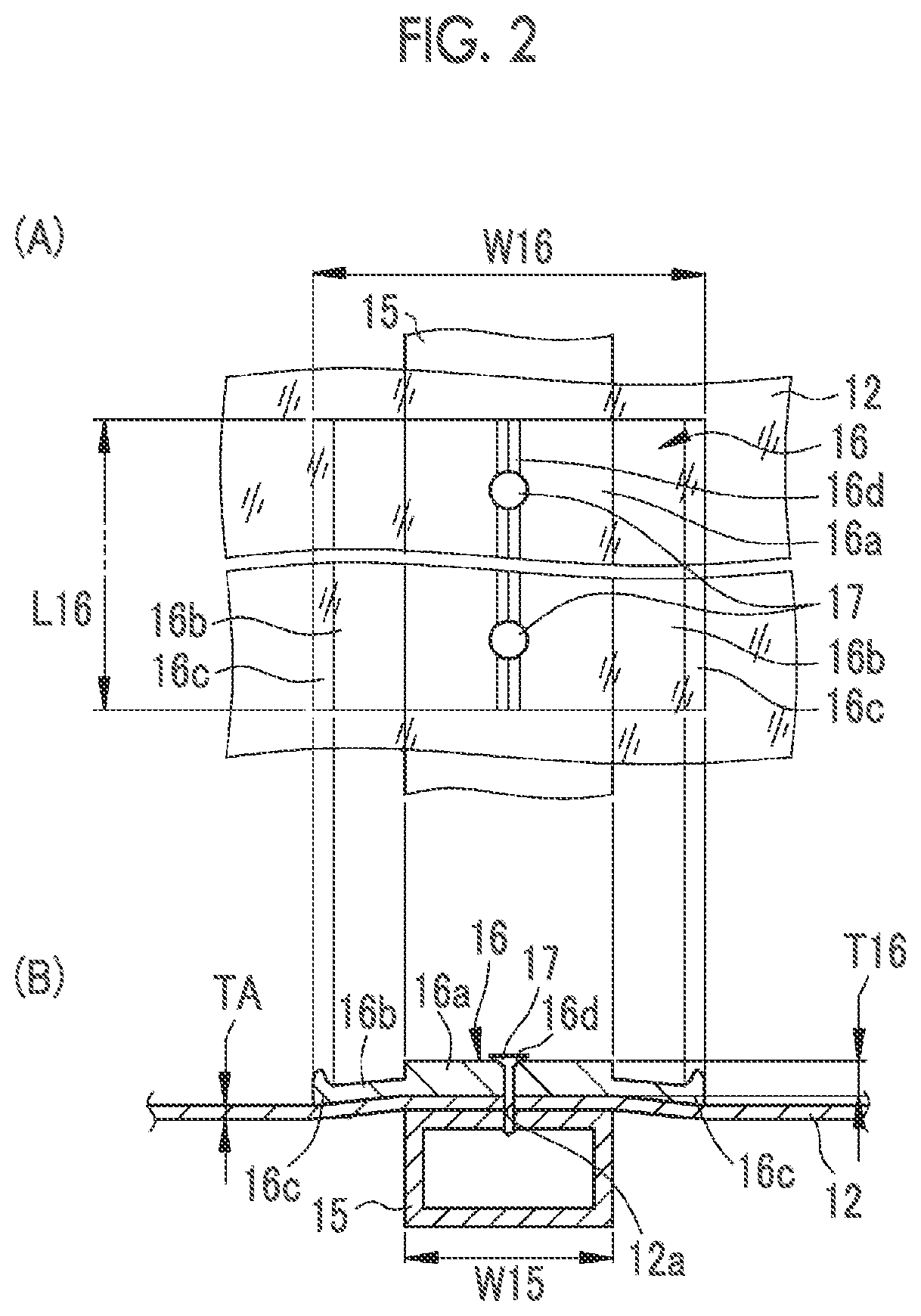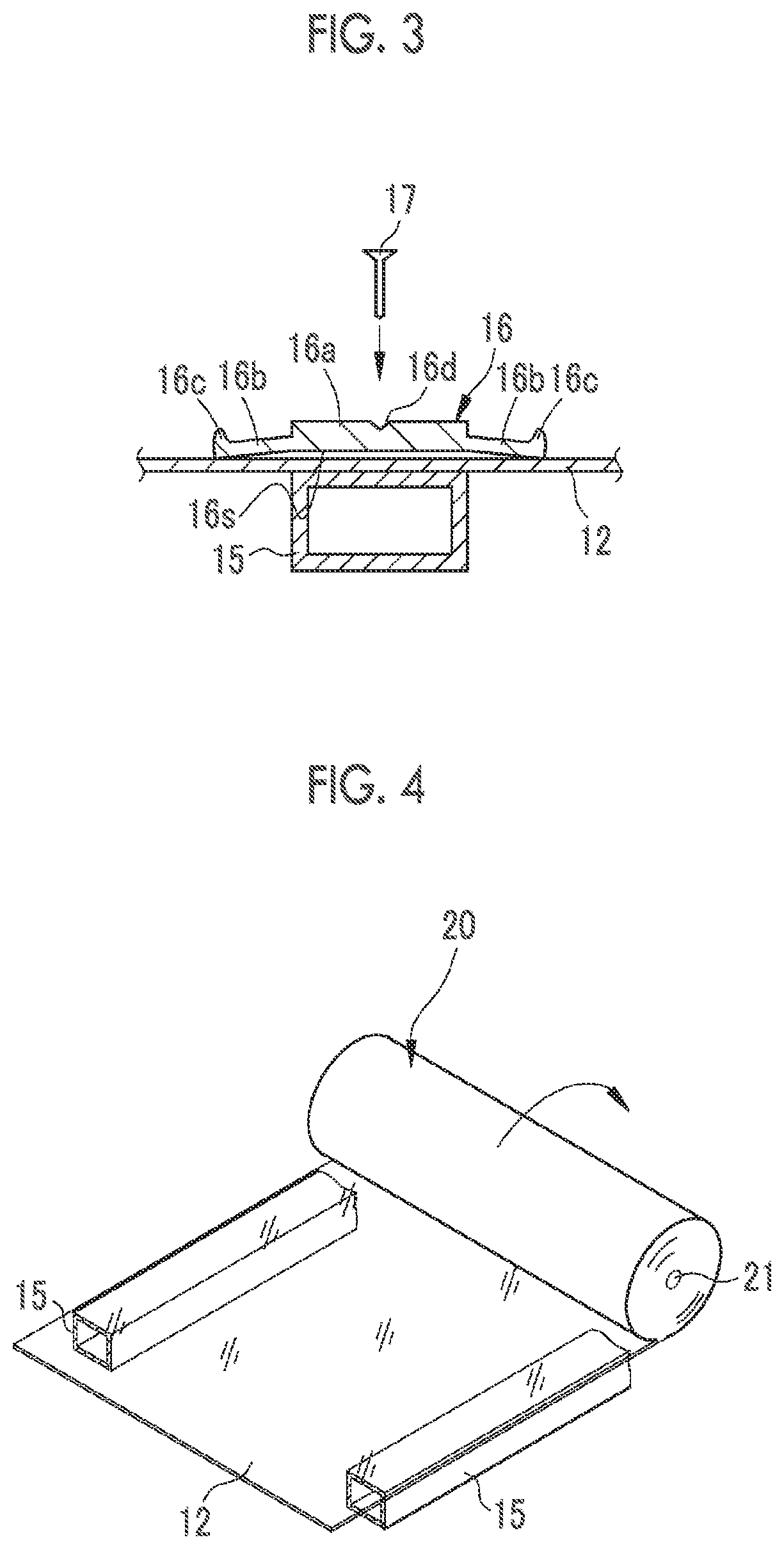Agricultural material, agricultural material roll, and agricultural house
- Summary
- Abstract
- Description
- Claims
- Application Information
AI Technical Summary
Benefits of technology
Problems solved by technology
Method used
Image
Examples
example 18
[Example 1] to [Example 18]
[0086]Long agricultural materials 12, 52, 62, and 72 were produced, and each was made into a roll form. These were designated as Examples 1 to 17. Example 1 and Example 7 are agricultural materials 12, Examples 2 to 6 and Examples 8 to 12 are agricultural materials 72, Examples 13 to 17 are agricultural materials 62, and Example 18 is agricultural material 52.
[0087]In Table 1, the “first CA layer” in the case of the agricultural materials 12 and 72 is the cellulose acylate layer 41 constituting the first material surfaces 12A and 72A, and the first CA layer in the case of the agricultural materials 52 and 62 is the cellulose acylate layer 41 in which the saponified layer 53 is formed on the second CA surface41B. The “second CA layer” is the cellulose acylate layer 41 that is not provided with the saponified layer 53 and that constitutes the second material surfaces 62B and 72B.
[0088]The column “Material” of “Polymer layer” in Table 1 indicates each of the ...
example 29
[Example 29] and [Example 30]
[0118]The agricultural materials 72 of Examples 2 and 8 were saponified by an immersion method, and these were designated as Examples 29 and 30. The saponification treatment was carried out under the following conditions. An agricultural material was immersed in an aqueous solution of NaOH having a concentration of 1.5 mol / L at a temperature of 50° C. for an immersion time of 180 seconds. Subsequently, as a first washing step, the material was subjected to immersion washing with pure water at a temperature of 25° C. for 15 seconds, and a neutralization step was carried out with an aqueous solution of sulfuric acid (H2SO4 aq) having a concentration of 0.3 mol / L at a temperature of 25° C. for a neutralization time of 15 seconds. A second washing step was carried out by immersion washing with pure water at a temperature of 25° C. for 15 seconds, performing dehydration of the surface of the film with an air knife, and then drying the film in a drying step at...
example 19
[Example 19] to [Example 28]
[0121]Agricultural houses 10 were produced using portions of the agricultural materials 12, 52, 62, and 72 produced in the Examples. An agricultural material roll 20 of each of the agricultural materials 12, 52, 62, and 72 was rolled over a framework 11 and spread. The Example numbers of the agricultural materials 12, 52, 62, and 72 used are shown in the column “Agricultural materials” of Table 2. The “Backbone interval” in Table 2 is the distance between adjacent backbones (distance between centers in the width direction of the backbones) extending in the same direction, and this backbone interval is equal to the distance between the through-holes 12a fixed with screws 17. In addition, the column “Thickness configuration” in Table 2 shows the sum of the thicknesses of the first CA layer and the saponified layer in Table 1, the thickness of the polymer layer, and the thickness of the second CA layer, in order from the left-hand side.
[0122]In the agricultu...
PUM
| Property | Measurement | Unit |
|---|---|---|
| Thickness | aaaaa | aaaaa |
| Thickness | aaaaa | aaaaa |
| Thickness | aaaaa | aaaaa |
Abstract
Description
Claims
Application Information
 Login to View More
Login to View More - R&D
- Intellectual Property
- Life Sciences
- Materials
- Tech Scout
- Unparalleled Data Quality
- Higher Quality Content
- 60% Fewer Hallucinations
Browse by: Latest US Patents, China's latest patents, Technical Efficacy Thesaurus, Application Domain, Technology Topic, Popular Technical Reports.
© 2025 PatSnap. All rights reserved.Legal|Privacy policy|Modern Slavery Act Transparency Statement|Sitemap|About US| Contact US: help@patsnap.com



